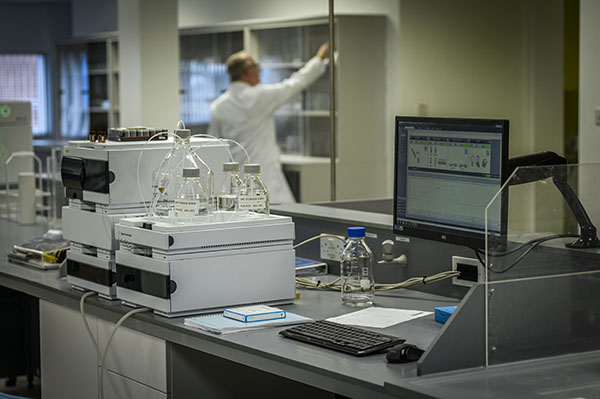During a recent Vapor Technology Association event, several experts discussed the major obstacles for the ENDS industry.
By Timothy S. Donahue
The e-cigarette is on the ropes. Over the last 18 months, especially the last four, three major developments have forced the vapor industry into an outright battle for its existence. These events have several states and even the U.S. government using the issues to either ban flavors in e-liquids or ban all vapor products entirely. Several industry experts say that an outright flavor ban (except tobacco flavor) would force thousands of businesses to close, eliminate nearly 200,000 jobs and cost tens of billions of dollars in negative economic impact.
First came a large increase in youth use, and later, the U.S. Food and Drug Administration (FDA) was forced to ramp up its premarket tobacco product application (PMTA) deadline, then the lung illnesses started happening. In early June, the U.S. Centers for Disease Control and Prevention (CDC) and the FDA began to receive reports surrounding an outbreak of respiratory illnesses linked to what the FDA and CDC claim were “vapor and e-cigarette” products (see “Irrational Hysteria,” page 18). In response to the epidemic, several states, the FDA and even President Trump himself have called for a ban on all flavored e-cigarette products.
At least four states, New York, California, Michigan, Rhode Island and Massachusetts, have enacted some type of vapor ban. Vapor Technology Association (VTA) Executive Director Tony Abboud, in response to the flavor bans, said his organization is “going to make it clear that this is the wrong approach, that it will literally cut down an entire industry that has grown up, with 166,000 jobs, to challenge the tobacco industry, and they are mostly small businesses.”
The industry is also struggling to get PMTAs submitted to the FDA by a court-ordered deadline. On July 12, Judge Paul Grimm of the U.S. District Court for Maryland ruled in a lawsuit filed by anti-tobacco groups that the regulatory agency had exceeded its authority in allowing electronic nicotine-delivery systems (ENDS) to remain on the market until 2022 before companies applied for regulatory approval. Grimm subsequently ordered vapor companies to submit costly PMTAs to the FDA by May 12, 2020, or remove the lifesaving products from the market. The FDA would then have one year to approve or deny those submissions.
The possibility does exist that the deadline could be moved, however. Several vapor organizations, including the VTA, have been granted a motion to Iitervene exclusively for the limited purpose of filing an appeal of the Memorandum Opinion and Order and the Remedy Order that forced vapor companies to submit PMTAs to the FDA by the new deadline. “The vapor associations have no other opportunity to provide their views on the deadline imposed in the Remedy Order, and the government’s objectives appear to have diverged from the interests of the vapor associations that seek to intervene,” Grimm wrote in his ruling.
The judge denied a motion to stay the order. “I also will deny the vapor associations’ motion to stay because, as noted, the Remedy Order does not impose immediate deadlines, and the vapor associations have not shown that ‘a pressing need exists,’” Grimm wrote.
Lawyers with the law office of Keller and Heckman (KH), a Washington, D.C., law firm that represents the VTA and other vapor industry stakeholders, filed motions to intervene and stay with the U.S. District Court for the District of Maryland pending appeal of the July 12, 2019, Memorandum Opinion and Order (Remedies Order) on behalf of several vapor trade associations. KH also filed a notice of appeal with the United States Court of Appeals for the Fourth Circuit on July 30, informing the appellate court of its intent to appeal the District Court’s order denying the trade associations’ initial attempt to intervene in the case on the remedies issue.
During the VTA’s fourth annual Vape & the FDA event, these topics were at the forefront of discussion as the more than 270 attendees from 42 U.S. states and four countries fretted over the future of the U.S. vapor industry. Combating youth initiation, fighting to keep flavors legal and forcing the FDA and the CDC to be truthful about the causes of the lung illnesses are primary goals of the VTA’s more than 90 members, including 26 state vapor advocacy organizations.
Several speakers told attendees about various segments of the vapor industry. Chris Howard, vice president, general counsel and chief compliance office for E-Alternative Solutions, discussed the history of the vapor industry and the oddball way the FDA has attempted to regulate it. “The deeming rule, PMTA process, flavors, speculation … it has been a crazy ride,” says Howard.
Brad Rodu, endowed chair in tobacco harm reduction at the University of Louisville, said vaping is driving smoking rates down as e-cigarette use rises. Studies like the FDA’s National Youth Tobacco Survey (NYTS) are intentionally misinterpreted in order to give the vapor industry a black eye. He says that laws that ban flavors just aren’t going to work, but more importantly, “federal agencies aren’t accountable to anyone.” This is why the rash of lung-related illnesses has been placed at the feet of the vapor industry instead of the marijuana industry where it belongs.
Factual distortion
As of Oct. 1, more than 1,000 people had been hospitalized for a serious respiratory illness, and at least 18 deaths had been possibly attributed to a thickening agent, vitamin E acetate, that only recently began to be used in THC-containing cartomizers, according to data from the CDC and the FDA. Several vapor industry experts have accused both the FDA and the CDC of intentionally misleading the public as to the circumstances surrounding the outbreak and accused the government agencies of wrongly placing some of the blame on nicotine-based vapor products.
During the VTA event, Michael Siegel, a professor with the Boston University School of Public Health, told attendees that CDC protocols for outbreak investigations are being ignored by the agency itself. Siegel trained with the CDC for two years in how to properly respond to an epidemiological outbreak. “They are telling you to ignore the facts. This is completely against the CDC’s protocol for outbreak investigations,” says Siegel. “I was trained by the CDC to conduct these investigations. You never find a single exposure in any outbreak. That’s not the way the world works; it’s not the way data works.”
A major issue the CDC, the FDA and even the Department of Health and Human Services (HHS) have is that none of the organizations recommend that clinicians test for THC in the patients with lung illnesses, according to Siegel. He says that tells him that the organizations do not want to know or be forced to tell the public that this is a THC problem and not a nicotine problem.
“I believe they are not telling clinicians to do THC testing because they know the majority [would test positive]. That would completely destroy their ability to blame this on e-cigarettes, and I believe that is what they want to do. They saw this as an incredible opportunity,” he says. “They have been against e-cigarettes since the beginning, and nothing bad has been happening. Then you have this [outbreak of lung illnesses,] and they wanted to be able to say, ‘I told you so. We told you how bad e-cigarettes were.’ Even the secretary of HHS says to stop using e-cigarettes and doesn’t mention THC on their website.”
Siegel goes on to say that this is an inexcusable public health practice. He even goes as far as to label the actions by the CDC and the FDA as public health malpractice. “Could you imagine if we had an outbreak of e-coli from contaminated lettuce and the CDC put out a statement that didn’t mention the word lettuce anywhere? That would be completely irresponsible,” he says. “Even if they didn’t know for sure … it would be inexcusable. It isn’t just the CDC; it’s every major health organization that deals with the anti-tobacco groups [spreading vaping illness misinformation].”
When trying to determine the cause of an outbreak, Siegel says the CDC must look at the data. The CDC trains epidemiologists to look at certain characteristics such as age, sex, race, location and timing. When looking at the timing of the lung illness outbreak, it was around May of 2019 that there was a sharp spike in vaping-related illnesses. “Why did it start now? Any explanation must explain that,” said Siegel. Second is looking at the distribution of cases. “If it were a nationally sold product, why would entire states be spared completely, at least early on,” he says.
Siegel goes on to explain that the majority of patients were aged between 16–53 with a median age of 19. This means a full half of these cases are between the ages of 16–19. There are twice as many adult vapers between the ages of 25 and 44. The number of people under the age of 20 that use e-cigarettes is very low, according to Siegel. “It doesn’t fit the pattern,” he says. “It doesn’t make sense that this is electronic cigarettes.”
By his estimates, Siegel says that 90 percent of cases reported using black market THC vaping cartridges. In New York state, every THC cartridge tested was found to contain the thickening agent vitamin E acetate. He stated that in New York state, every patient used THC products. There were also no abnormalities in any of the e-liquids tested.
“So put all this together … because of the timing we know this is not any electronic cigarette or e-liquid. Then, what youth is going to readily admit to using marijuana?” Siegel asks. “The most important thing is that the CDC is not recommending patients be tested for THC. This is a striking revelation. There is no way to tell if a youth is using marijuana without testing. This is something the CDC should be recommending …. The CDC conclusion is … it’s electronic cigarettes. There is no way that could be the case. Even without looking at the data, we knew that wasn’t the case. The CDC recommendation was don’t use e-cigarettes. Kids are dying from buying black market THC cartridges, and the CDC is telling them to stop using e-cigarettes.”
Unfortunately, this transfers into public policy, Siegel explains. The president has said he is going to ban flavored e-cigarettes. The FDA is saying they will ban flavored e-cigarettes. The pieces are starting to come together. “What is happening is the CDC, the FDA, the Trump administration and all the anti-tobacco groups are saying ‘we have a THC cartridge problem.’ So, we should ban all e-cigarettes,” Siegel says. “It’s a complete disconnect. They are using a crisis in one industry to attack another.”
Power push
The FDA does not have the authority to do anything about marijuana-based products. Federal law prohibits the federal sale of marijuana, so it makes it very difficult to regulate, according to Siegel. He says it is also the opinion of many people, including former FDA Commissioner Scott Gottlieb, that the FDA could be given a limited amount of authority over these products through Congress. States, however, have the power to regulate THC products.
“There is nothing to stop states from their own enforcement. If states were really concerned about this outbreak, what they should be doing is spending less time demonizing e-cigarettes and spending more time trying to find the illicit distribution channels for these illicit THC vaping carts,” Siegel says. “E-cigarettes are becoming the scapegoat for a situation that has nothing to do with nicotine. In 2007, when vaping products first hit the market, I was adamantly opposed to them. Everything you hear the FDA, [the] CDC and anti-vaping groups saying now, I was saying in 2007.”
Siegel says he then did something that none of these anti-tobacco groups has done in the last 12 years: He started to talk to some human beings who were actual vapers to try to figure out what these products were and how they helped people quit smoking cigarettes.
“When I found out the truth, that completely changed my point of view. That is not what’s happening. These anti-tobacco groups state their position, stake their ground and confirm to their preexisting [beliefs] to the point that when they have information which directly contradicts their preexisting conclusion, they are twisting it in a certain way and are really going through great lengths of desperation to try and twist it to make it fit even though it doesn’t.”
Seigel says another issue that continues to plague the vapor industry is the term “e-cigarettes.” He says that what you call something has incredible implications. “I think it is unfortunate that e-cigarettes took on the term ‘e-cigarettes’ from the very beginning because that just fed right into the anti-smoking groups propaganda that this is just another form of smoking,” he said. “I think it is very critical that we make the difference [between e-cigarettes and e-joints clear]. We need to come up with terms that make the two very different.”
The VTA has been an active voice in the vapor industry over the past several years. It has also been doing its part to help get the word out that THC products, not nicotine, are at the center of the lung illness epidemic. Abboud says that the VTA has “applauded government when it acts responsibly. We have been holding our decision makers accountable when they are not acting responsibly. Because we represent all the different sectors of this industry, we are able to speak clearly to our leaders in terms of a rational comprehensive policy around this industry segment.”
He’s right. The VTA has fought anti-vaping bills in nearly every U.S. state and has prevented the industry from becoming regulated out of existence. That’s pretty positive since the vapor industry makes an enormous economic impact of $24.5 billion on the U.S. economy, according to the VTA. It provides over $7.9 billion in wages alone. He believes that flavors aren’t the real problem, but the real problem is what companies name those flavors and how they market those products.
Abboud says that vape shops should not have flavors banned because they are better at verifying age than a traditional gas station or convenience store. “Vape shops are a place of community, and this [is] why they are better able to protect youth from getting these products. We need to remind people all the time that all of these products have flavors, and even tobacco is a flavor,” he says. “The real issue is marketing not flavors. Flavors are needed to make these products consumable. Banning flavors is too simplistic of an argument. We need to look at all the marketing issues that exist. Unicorn puke, cotton candy—news flash, these are not flavors, they are marketing gimmicks. The real issue is how do we control these things.”
There have been several studies as well as an enormous amount of survey data that have found that flavors are helping people quit smoking cigarettes, according to Abboud. He says that what most anti-vaping groups are really concerned about is the argument that vaping is a gateway to smoking. Siegel agreed with Abboud that the gateway does not exist, but anti-vapor groups misconstrue data to argue that it does.
Both agree that vapor products are safer than smoking cigarettes. “No serious person says that e-cigarettes aren’t at the lower end of the risk continuum,” says Abboud. “If flavors are banned, what will happen is the mass market exit of the vapor product. People will start smoking again, and that is a bad thing.”
 The vapor industry makes an economic impact of more than $24 billion in the U.S. The news media is now being more responsible in its reports surrounding lung disease caused by black market THC vapor products. Speaking at TABEXPO, a vapor and tobacco trade show that was held in Amsterdam in November, Maggie Gowen, the executive director of the Global Vaping Standards Association (GVSA), said the e-cigarette and vapor industry in the U.S. is larger than the country’s iron and steel industry and employs nearly as many people as the commercial fishing industry. The industry has produced over 166,000 jobs, and wages and benefits earned are about $8 billion.
The vapor industry makes an economic impact of more than $24 billion in the U.S. The news media is now being more responsible in its reports surrounding lung disease caused by black market THC vapor products. Speaking at TABEXPO, a vapor and tobacco trade show that was held in Amsterdam in November, Maggie Gowen, the executive director of the Global Vaping Standards Association (GVSA), said the e-cigarette and vapor industry in the U.S. is larger than the country’s iron and steel industry and employs nearly as many people as the commercial fishing industry. The industry has produced over 166,000 jobs, and wages and benefits earned are about $8 billion.













